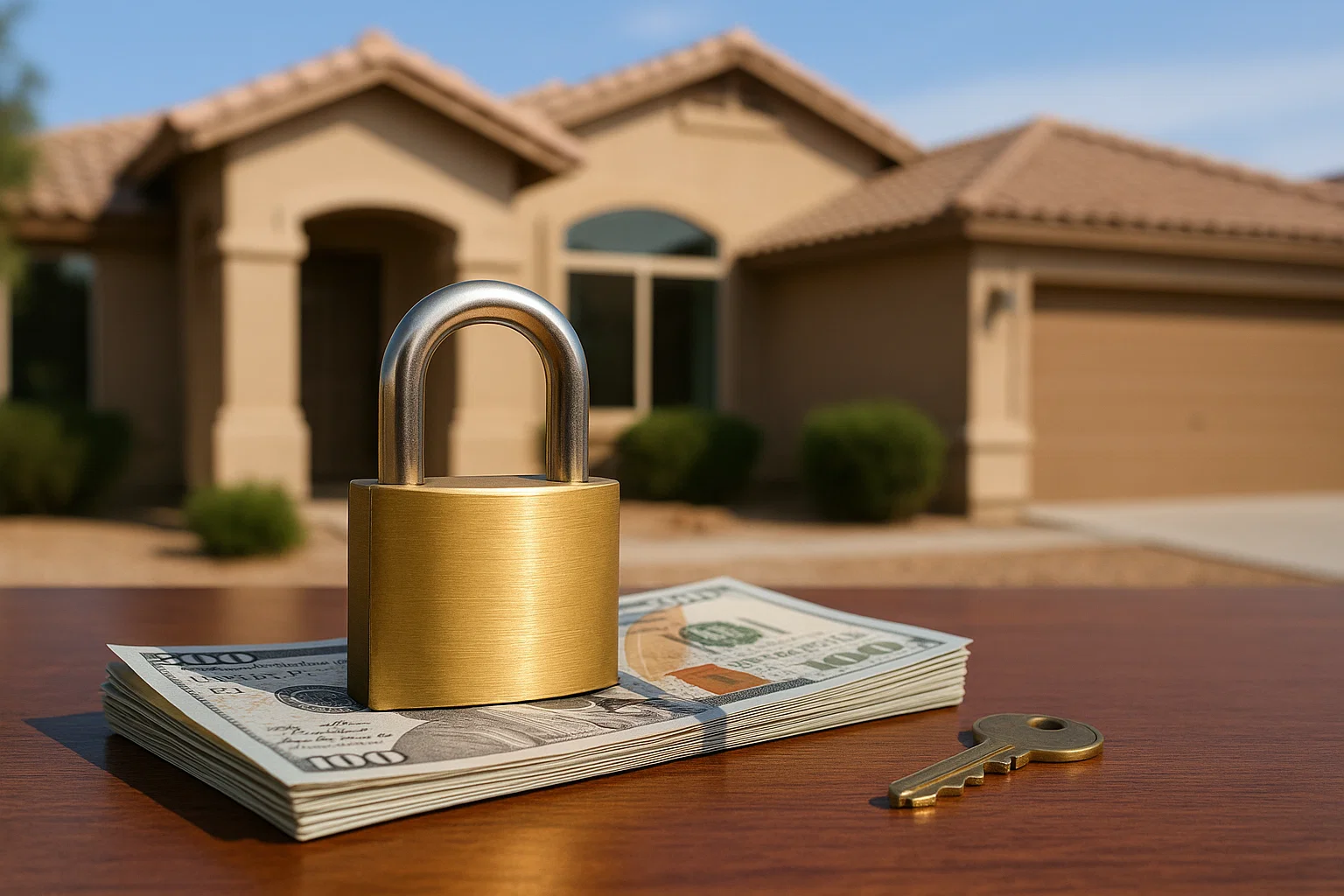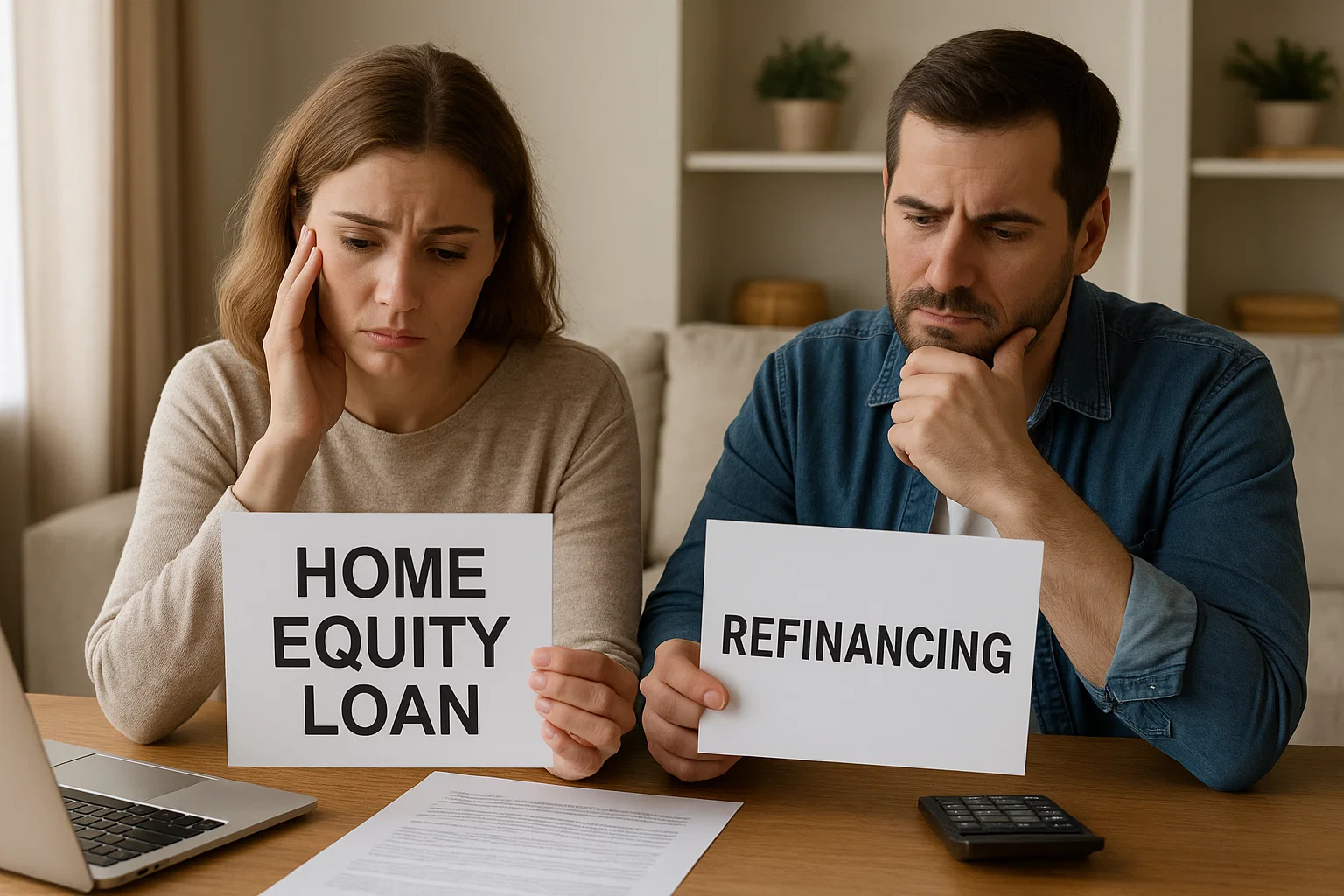Refinance 2nd Mortgage: Your Essential Guide to Lowering Payments
November 19, 2025
Learn how to refinance your 2nd mortgage with our essential guide. Discover options, benefits, and steps to lower payments and manage debt.

Thinking about a refinance 2nd mortgage? It sounds complicated, but it can be a really good way to save some money each month. Basically, you're replacing your current mortgage with a new one that has better terms. Maybe interest rates have dropped, or maybe your financial situation has changed. Whatever the reason, understanding your options for a refinance 2nd mortgage is key to making sure you get the best deal possible. We'll walk through what you need to know.
Key Takeaways
- Refinancing your mortgage means replacing your current loan with a new one, ideally with better terms like a lower interest rate or a different loan length.
- When considering a refinance 2nd mortgage, compare offers from multiple lenders to find the best interest rate, APR, and loan terms.
- Before applying, check your credit score and know your home's equity, as these factors heavily influence your loan approval and rate.
- Refinancing can help lower monthly payments, allow you to access home equity for cash, or consolidate debt, but it does come with closing costs.
- Always review all loan documents carefully, especially the Closing Disclosure, to ensure you understand all the terms and fees before signing.
Understanding Your Refinance Options

What Is Mortgage Refinancing?
So, you're thinking about refinancing your mortgage, maybe even your second mortgage. What does that actually mean? Basically, it's like getting a brand new loan to pay off your old one. You apply for a new mortgage, and if you get approved, that new loan's purpose is to clear the slate on your existing mortgage debt. The catch, or the benefit depending on how you look at it, is that this new loan comes with its own set of rules – new interest rates, new payment amounts, and a new timeline. It’s a way to swap out your current loan for one that might fit your financial life a little better right now.
Second Mortgage vs. Refinancing: Key Differences
It's easy to get these two terms mixed up, but they're quite different. A second mortgage is an additional loan taken out while you still have your first mortgage. Think of it as a loan on top of your original home loan, often used for things like home improvements or consolidating debt. Refinancing, on the other hand, is about replacing your entire existing mortgage (or sometimes just the first mortgage, but we're talking about second mortgages here) with a new one. You're not adding a loan; you're swapping one out for a different one. Sometimes, a cash-out refinance on your first mortgage can act a bit like a second mortgage because you're pulling out equity, but the structure is fundamentally different.
When Does Refinancing Make Sense?
Okay, so when should you actually pull the trigger on refinancing? There are a few key scenarios. The most common reason is if current interest rates are significantly lower than the rate on your existing mortgage. If you can get a new loan with a lower rate, you could save a good chunk of money over the life of the loan, and your monthly payments might drop too. Another good time is if your credit score has improved a lot since you first got your mortgage. A better score usually means a better interest rate. Also, if you've built up a good amount of equity in your home, you might be able to refinance and pull some of that equity out as cash for other needs, like home repairs or paying off high-interest debt. It really comes down to whether the numbers make sense for your specific situation and your financial goals.
Here's a quick look at what to consider:
- Lowering Monthly Payments: If rates have dropped or your credit has improved.
- Accessing Home Equity: Pulling out cash for large expenses or debt consolidation.
- Switching Loan Types: Moving from an adjustable-rate mortgage (ARM) to a fixed-rate loan for stability.
- Shortening Loan Term: Paying off your home faster and saving on total interest.
Refinancing isn't a magic bullet. You'll have closing costs, similar to when you first bought your home. It's important to calculate how long it will take for those savings to outweigh the costs. If you plan to move in a few years, it might not be worth it.
Preparing for Your Refinance Application
So, you've decided refinancing your second mortgage is the way to go. Awesome! But before you start clicking around on lender websites, there's a bit of homework to do. Getting your ducks in a row now will make the whole application process smoother and help you snag the best possible deal. Think of it like prepping for a big exam – the better you study, the better you'll do.
Define Your Refinance Goals
First things first, what exactly are you trying to achieve by refinancing? Are you looking to slash your monthly payments to free up some cash flow? Maybe you want to tap into your home's equity to pay off some high-interest debt or fund a renovation. Or perhaps you're aiming to switch from an adjustable-rate loan to a fixed rate for more predictable payments. Knowing your primary objective will guide every decision you make from here on out. It helps you focus on the loan types and terms that actually matter for your situation.
Review Your Credit Score
Your credit score is a big deal when it comes to refinancing. Lenders use it to gauge how risky it might be to lend you money. Generally, the higher your score, the better interest rate you'll qualify for. It's a good idea to pull your credit reports from the major bureaus (Equifax, Experian, and TransUnion) a few months before you plan to apply. Look for any errors and dispute them. If your score isn't where you'd like it, focus on paying down credit card balances and avoiding any new credit applications. Even a small bump in your score can save you a good chunk of change over the life of the loan.
Assess Your Home Equity
How much equity do you have in your home? This is basically the difference between your home's current market value and how much you still owe on your mortgages. Lenders will want to know this because it affects how much they're willing to lend you. Most lenders will let you borrow up to a certain percentage of your home's value, often around 80% for a refinance, especially if you're looking to take cash out. You can get a rough idea of your home's value by looking at recent sales of similar homes in your neighborhood on sites like Zillow or Redfin. For a more precise figure, you might consider getting a comparative market analysis (CMA) from a local real estate agent.
Gather Necessary Financial Documents
Get ready to become best friends with your scanner or smartphone camera. Lenders will need a pretty thorough look at your financial picture. You'll typically need:
- Proof of Income: This usually means your last two years of W-2s or tax returns, along with your most recent pay stubs.
- Mortgage Statements: You'll need statements for your current first and second mortgages.
- Bank Statements: Recent statements for all your checking and savings accounts.
- Identification: A valid government-issued ID.
Be prepared to explain any unusual activity, like large deposits or withdrawals, or any gaps in employment. The more organized you are with these documents, the faster the lender can process your application. It's also a good idea to have a list of your other debts, like car loans or student loans, handy.
Refinancing involves costs, like appraisal fees, title insurance, and origination fees. These can add up, often ranging from 2% to 5% of the loan amount. While you can sometimes roll these costs into the new loan, it means borrowing more and paying more interest over time. Always ask for a Loan Estimate from each lender so you can compare these costs apples-to-apples.
Comparing Lenders and Loan Terms
So, you've decided refinancing your second mortgage is the way to go. Awesome! But before you jump into signing anything, you've got to do a little homework. It's all about shopping around and making sure you're getting the best deal possible. Think of it like picking a contractor for a big home project – you wouldn't just go with the first one you find, right? Same idea here.
How to Compare Lender Quotes
When you start getting quotes from different lenders, it can feel a bit overwhelming. They all throw around numbers and terms, and sometimes it's hard to tell what's what. The best way to compare is to look at a few key things side-by-side. Don't just focus on the interest rate; that's only part of the story.
Here’s a quick checklist to keep you organized:
- Interest Rate: This is the percentage the lender charges you to borrow money. Lower is generally better.
- Annual Percentage Rate (APR): This is a broader measure of the cost of borrowing. It includes the interest rate plus other fees associated with the loan, spread out over the loan's term. The APR gives you a more accurate picture of the total cost.
- Loan Term: How long will you be paying back the loan? Shorter terms usually mean higher monthly payments but less interest paid overall. Longer terms mean lower monthly payments but more interest over time.
- Fees: Lenders charge various fees, like origination fees, appraisal fees, title insurance, and more. Make sure you know what they are and how much they add up to.
- Closing Costs: These are the total expenses you'll pay at the end of the loan process. Get an estimate upfront.
Understanding Interest Rates and APR
Let's talk a bit more about interest rates and APR. The interest rate is pretty straightforward – it's the price of the money you're borrowing. But the APR? That's the real deal-maker. It bundles up the interest rate with things like points, mortgage insurance, and other lender fees. So, two loans might have the same interest rate, but if one has a bunch of extra fees rolled into its APR, it's actually going to cost you more.
It's super important to get a Loan Estimate from each lender you talk to. This standardized document makes it easier to compare apples to apples because it lays out all the costs in a clear format. You can often find a good local lender who can walk you through this.
Evaluating Loan Terms and Fees
Beyond the rate and APR, the actual terms of the loan matter a lot. Are you looking for a fixed rate, where your payment stays the same for the life of the loan? Or are you okay with an adjustable-rate mortgage (ARM), where your rate and payment could go up or down? For a second mortgage refinance, locking in a fixed rate often provides more budget certainty.
Also, be aware of any prepayment penalties. Some loans charge you extra if you decide to pay off the loan early, which might be something you want to do down the line. Always read the fine print!
When comparing offers, don't be afraid to ask questions. If something isn't clear, ask the loan officer to explain it in plain English. It's your money and your home, so you deserve to understand every detail before you commit.
The Refinance Process Step-by-Step
So, you've decided to refinance your second mortgage. That's a big step! Now comes the part where you actually make it happen. It might seem a little daunting, but breaking it down into steps makes it much more manageable. Think of it like following a recipe – you need to get the ingredients ready, mix them up, and then bake it. Let's walk through what that looks like for your mortgage.
Submitting Your Refinance Application
This is where you officially tell a lender you want their help. You'll need to fill out a loan application, which is pretty standard. They'll ask for a bunch of personal and financial information. Be ready to hand over things like recent pay stubs, W-2s or tax returns from the last couple of years, and bank statements. It's also a good idea to have your current mortgage statement handy. If there are any big deposits in your bank account or if you've changed jobs recently, be prepared to explain those. The lender needs to get a clear picture of your financial life, so being organized here really helps speed things up.
The Home Appraisal Process
Most of the time, your lender will want to know what your home is worth right now. This is where the appraisal comes in. An appraiser will come to your house and give it a thorough look-over. They're checking out the condition of your home, its size, and what similar homes in your neighborhood have sold for recently. A good appraisal is key to getting the loan terms you want. If you're thinking about refinancing, it doesn't hurt to do a little tidying up around the house beforehand. Fresh paint or some landscaping can sometimes make a difference. This step is especially important if you're looking to do a cash-out refinance, as the amount you can borrow is tied to your home's value. You can check out home values online for a general idea, but the official appraisal is what counts.
Underwriting and Verification
After the appraisal, your application goes to the underwriting department. These folks are like the detectives of the mortgage world. They'll go through all the documents you submitted with a fine-tooth comb. They're verifying your income, checking your debts, and making sure everything matches up with what the appraisal said. Sometimes, they might ask for more paperwork or a written explanation for something. It's best to respond to these requests as quickly as possible. The faster you get them what they need, the faster they can approve your loan.
Closing on Your New Mortgage
This is the finish line! Before you sign anything, you'll get a document called a Closing Disclosure. You should get this at least three days before you actually sign the papers. It's super important to look this over carefully and compare it to the Loan Estimate you got earlier from the lender. It details all the final loan terms, your interest rate, and all the costs involved. Once you sign, there's usually a short waiting period, often three days, called a rescission period, before the loan officially funds and your old mortgage is paid off. Then, congratulations, you've got a new mortgage!
Benefits of Refinancing Your Second Mortgage

So, you've got a second mortgage, and maybe those monthly payments are starting to feel like a bit of a squeeze. Or perhaps your financial picture has changed since you first took out that loan. Refinancing your second mortgage could be a smart move, and here's why.
Lowering Your Monthly Payments
This is often the biggest draw for people looking to refinance. By getting a new loan for your second mortgage, you might be able to snag a lower interest rate than what you're currently paying. Even a small drop in the interest rate can make a noticeable difference in how much you pay each month. Think about what you could do with that extra cash – maybe put it towards savings, pay down other debts faster, or just have a little more breathing room in your budget. It's like finding money you didn't know you had.
Accessing Home Equity for Cash
Refinancing isn't just about lowering payments; it can also be a way to pull out more cash from your home's equity. If your home's value has gone up since you got your second mortgage, or if you've paid down a good chunk of it, you might have more equity available. Refinancing can allow you to tap into that equity, giving you a lump sum to use for whatever you need – maybe a big home renovation project, paying for education, or covering unexpected medical bills. It's a way to use the value you've built up in your home.
Consolidating Debt Effectively
Got a bunch of different debts with high interest rates, like credit cards or personal loans? Refinancing your second mortgage can be a way to combine all that debt into one single payment. You could potentially get a lower overall interest rate by rolling that debt into your mortgage. This simplifies your finances, making it easier to keep track of payments, and can save you a good amount of money on interest over time. It's a way to get your financial house in order.
Switching to a Fixed Interest Rate
If your current second mortgage has a variable interest rate, your payments can go up and down, which can be stressful. Refinancing allows you to switch to a fixed-rate loan. This means your interest rate stays the same for the entire life of the loan, making your monthly payments predictable. Knowing exactly what you'll pay each month makes budgeting a whole lot easier and protects you if interest rates in general start to climb.
Refinancing your second mortgage isn't just about getting a new loan; it's about reshaping your financial future. It offers a chance to reduce your ongoing costs, access the value you've built in your home, and simplify your debt. Carefully weighing these benefits against the costs involved is key to making a decision that truly works for you.
Potential Risks and Considerations
Refinancing your second mortgage sounds great, right? Lower payments, maybe even some cash back. But hold on a sec, it's not all sunshine and rainbows. Like anything involving your home and a big chunk of money, there are definitely things to watch out for. You don't want to end up in a worse spot than you started, so let's talk about the not-so-fun stuff.
Understanding Refinance Costs
First off, refinancing isn't free. There are costs involved, and they can add up faster than you might think. You've got things like appraisal fees, title insurance, origination fees, and other closing costs. These can easily run you anywhere from 2% to 5% of the total loan amount. It's a good idea to get a Loan Estimate from a few different lenders so you can really compare what you're getting into.
Here's a rough idea of what you might see:
Many lenders let you roll these costs into your new loan. This keeps cash in your pocket now, but it means you'll be borrowing more and paying interest on those costs over the life of the loan. You gotta figure out if the savings from refinancing are really worth these upfront expenses. A good way to do this is to calculate your break-even point. That's how long it takes for your monthly savings to cover all the costs you paid to refinance. If you plan to stay in your home longer than that break-even point, it's probably a good deal.
Impact on Your Credit Score
When you apply to refinance, lenders will pull your credit. This hard inquiry can cause a small, temporary dip in your credit score. It's usually not a big deal, especially if your score is already pretty good. However, if you're applying with multiple lenders in a short period, those multiple inquiries could have a more noticeable effect. It's generally recommended to do your rate shopping within a concentrated timeframe (like 14-45 days, depending on the scoring model) so that multiple inquiries are treated as a single one for scoring purposes. Also, if you're currently struggling with payments or have a lot of debt, your credit score might already be low, which could mean higher interest rates or even denial of the refinance. Keeping your credit in good shape before you even think about refinancing is always the best move.
Long-Term Financial Implications
Refinancing can change your financial picture for years to come. One of the biggest things to consider is how the new loan term affects the total interest you'll pay. Sometimes, to get a lower monthly payment, you might end up extending the life of your loan. This means you could end up paying more interest overall, even if your interest rate is lower. It's a trade-off: lower monthly payments now versus potentially more money paid over the long haul. You also need to think about your future plans. If you're planning to sell your home in a few years, refinancing might not make sense if you won't be in the house long enough to recoup the closing costs and truly benefit from the lower rate. It's all about making sure the refinance aligns with your bigger financial goals, not just solving an immediate cash flow problem.
Wrapping Things Up
So, refinancing your second mortgage might seem like a lot, but it can really help out your wallet. We've gone over why you might do it, like getting a lower payment or maybe grabbing some cash. Remember to check your credit, see how much your house is worth, and shop around for the best deal. It takes a little effort, but saving money on your mortgage payments is totally worth it in the end. Don't forget to talk to a pro if you're feeling unsure about any part of the process.
Frequently Asked Questions
What exactly is mortgage refinancing?
Think of mortgage refinancing like swapping your old car loan for a new one, but for your house. You get a new loan that pays off your old one, and the new loan usually has better terms, like a lower interest rate or a different payment schedule. It's a way to update your mortgage to fit your current financial situation better.
When should I think about refinancing my mortgage?
It's a good idea to consider refinancing if interest rates have dropped since you got your first mortgage, or if your credit score has gotten much better. Refinancing can also make sense if you want to change your loan from a variable rate (which can change) to a fixed rate (which stays the same) for more predictable payments, or if you need to tap into your home's value for a big expense.
How is refinancing different from a second mortgage?
Refinancing means you replace your entire current mortgage with a new one. A second mortgage, on the other hand, is an entirely separate loan that you take out on top of your existing mortgage, using your home's value as collateral. It's like adding another layer of debt rather than changing the main one.
Can refinancing hurt my credit score?
It might cause a small, temporary dip in your credit score because applying for a new loan involves a credit check (a hard inquiry). Also, getting a new loan line can temporarily lower your score. However, if you use the refinance to pay off high-interest debts, your credit score could actually improve over time.
How long does the refinancing process usually take?
The whole process, from when you first apply to when the new loan is finalized (funded), typically takes about 30 to 45 days. It involves several steps like applying, getting an appraisal, and the lender checking all your financial details.
Is it worth refinancing if I don't owe much on my mortgage?
Even if you have a small balance left on your mortgage, refinancing can still be beneficial. If you can get a lower interest rate or shorten the time you have to pay it off, you could end up saving money on interest and pay off your home sooner. It's worth talking to a loan expert to see if the savings make sense for your specific situation.













Get in touch with a loan officer
Our dedicated loan officers are here to guide you through every step of the home buying process, ensuring you find the perfect mortgage solution tailored to your needs.
Options
Exercising Options
Selling
Quarterly estimates
Loans
New home

Stay always updated on insightful articles and guides.
Every Monday, you'll get an article or a guide that will help you be more present, focused and productive in your work and personal life.









.png)
.png)
.png)
.png)
.png)
.png)
.png)
.png)
.png)
.png)
.png)
.png)
.png)
.png)
.png)
.png)
.png)
.png)